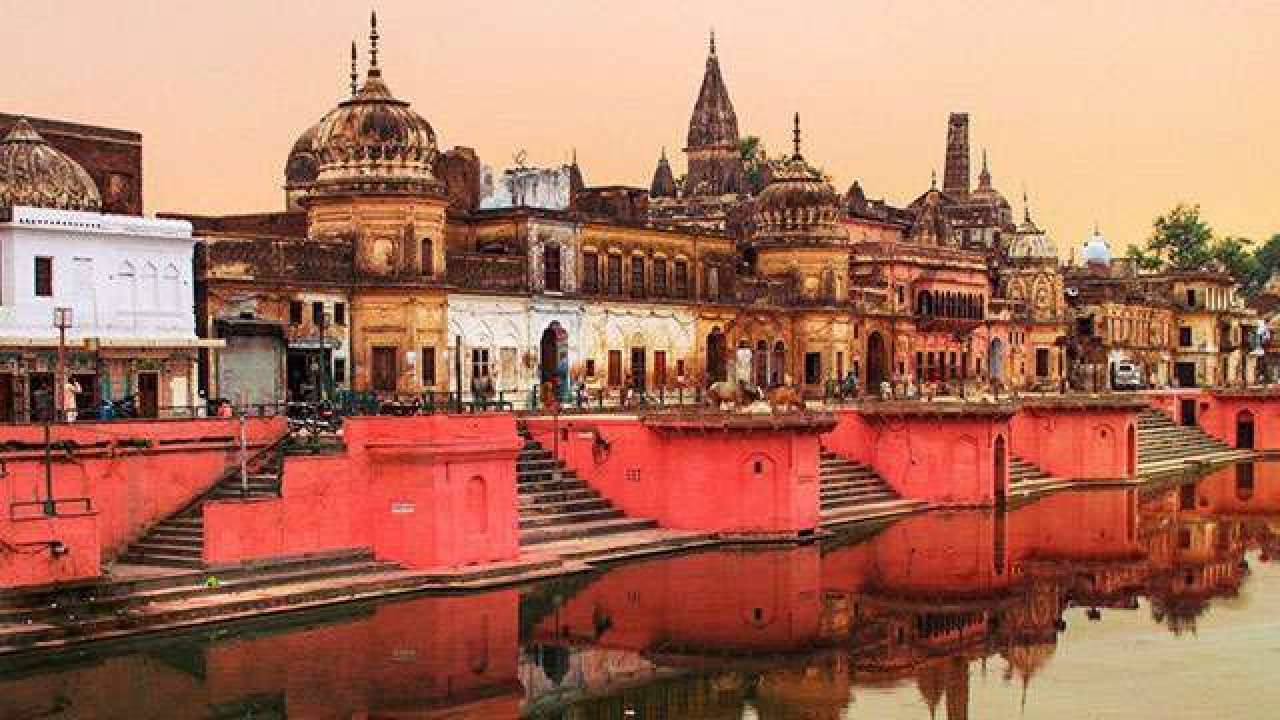According to Hindu legend, the mythic man Manu founded Ayodhya, as recorded in the Hindu epic Ramayana. Later, it became the capital of the Suryavanshi (Sun) dynasty, of which Lord Rāma is the most celebrated king. References to Ayodhya are also contained in the Atharva Veda. Jain traditions claim that five Tirthankaras (Jain equivalents of Hindu gods) were born at Ayodhya.
The city is also believed to have served as the capital of the ancient Kosala kingdom, a sixth-century tribal oligarchy and rival to the mighty Magadha kingdom based in modern Bihar in the east (mentioned in the Buddhist sources), as well as of medieval Awadh, or Oudh.
Ahead of the big day of the bhoomi poojan the Ram Temple’s architect has released some details about the structure that would come up at the complex. The Ram Temple will be 161 feet in height and will be almost double the size of the original design. The temple will be constructed in Nagara style of architecture and on the lines of North Indian temple architecture
There will be five domes instead of two as planned earlier. The construction is expected to take three years
Apart from the Ram Janmbhoomi Mandir that is to be built, there are many other significant temples in Ayodhya which are said to be related to Lord Rama. Let us know about these temples and interesting things about them
Kanak Bhawan Temple
Kanak Bhawan, a temple is said to have been built by Lord Krishna when he took incarnation in Dwapara Yuga. There is a legend that the ancient Deity in this temple is of the Ramayana period.
Kanak Bhawan: Sitaji's first gift in Ayodhya. The present form of this temple is from 1891, which was built under the supervision of Maharani Vrishabhanu Kumari, wife of Sawai Mahendra Pratap Singh, King of Orchha. Even before this, this temple has been constructed and renovated many times. In fact, according to mythological beliefs, the place where the Kanak Bhavan temple is built used to be the building of Goddess Sita, who got it from her mother-in-law Kaikeyi as her first gift after marriage.
Lord Krishna had built this temple in Ayodhya. When Lord Rama and Goddess Sita went to their lok and their son Kush became the king of Ayodhya, they installed the idol of Goddess Sita and Lord Rama in this temple and made this building a temple. Later, with the defeat of the city of Ayodhya, this temple also collapsed. In an inscription of Vikramaditya, it is told that after Jarasandha slaughter in Tretayuga, when Lord Krishna reached Ayodhya while doing pilgrimage, he saw a Padmasana Devi doing penance near the mound of Kanak Bhavan, then Krishna rebuilt Kanak Bhavan here.
Ram ki Paidi

Ayodhya has a series of ghats on the banks of the river Saryu, which is called Rama's Paidi. Once Lakshmanji wanted to go to the pilgrimage, Lord Rama showed a lila on the Saryu coast and told that every day before sunrise, all the pilgrims come here for bathing. Therefore, by taking a bath in the river Saryu, the virtue of bathing in all the pilgrimages is attained. Therefore, it is believed that by taking a dip in the river here, one gets freedom from unintentional sins.
Chhoti Devkaali Mandir
This temple is related to the marriage of Lord Rama and Goddess Sita. According to beliefs, when Goddess Sita came to Ayodhya after marriage, she also brought with her an idol of Goddess Girija. King Dasarathaji built a temple at this place for Girija Mata of Goddess Sita. Here Goddess Sita used to worship Girija Mata.
Treta Yug's Thakur temple

Lord gets named as Kala Raam. The Ramayana mentions the Ashwamedha yagna of Lord Rama. It is said that this temple is built at the place where Lord Rama performed Ashwamedha Yagya. It is also called the temple of Kalaram because the idol of Lord Rama in this temple is of black sandstone. Lord Rama along with his brothers, Hanuman, Devi Sita, and Gurujan are also present in the temple. The kapat of this temple opens only one day of the year on the day of Kartik Shukla Ekadashi i.e. Devaprabodhini.
Hanuman Garhi

Hanuman Ji in the lap of Sita Maata. One of the major temples of Ayodhya is Hanuman Garhi's Hanuman Temple. It is said that Lord Rama had asked Hanuman to remain seated here to protect Ayodhya. In the temple of Hanumanji there is a statue of Mata Anjani, who has Baal Hanuman sitting on her lap.
Naageshwar Nath Temple

Nageshwarnath is an ancient Shiva temple in Ayodhya. It is said about this temple that Lord Shiva's son Kush built the Shiva temple here. The legend behind this is that once Kush was bathing in the Saryu River. Coincidentally his armlet fell into the river, which Nagakanya picked up. Nagakanya was a devotee of Lord Shiva. Kush constructed this temple for the same Nagakanya.
Ayodhya is the mystic city of Lord Raam and known to be most civilized cities when Ram ruled it. The concept of Ram Rajya originated from the city of Ayodhya. As the Ram Janmbhoomi mandir begins to take shape, its time to relive the Ramayan with the experience and stories of Raam in Ayodhya.... the city of temples.
#AyodhyaRamMandir #BhoomiPujan #RamJanmabhoomi
Comments
Post a Comment